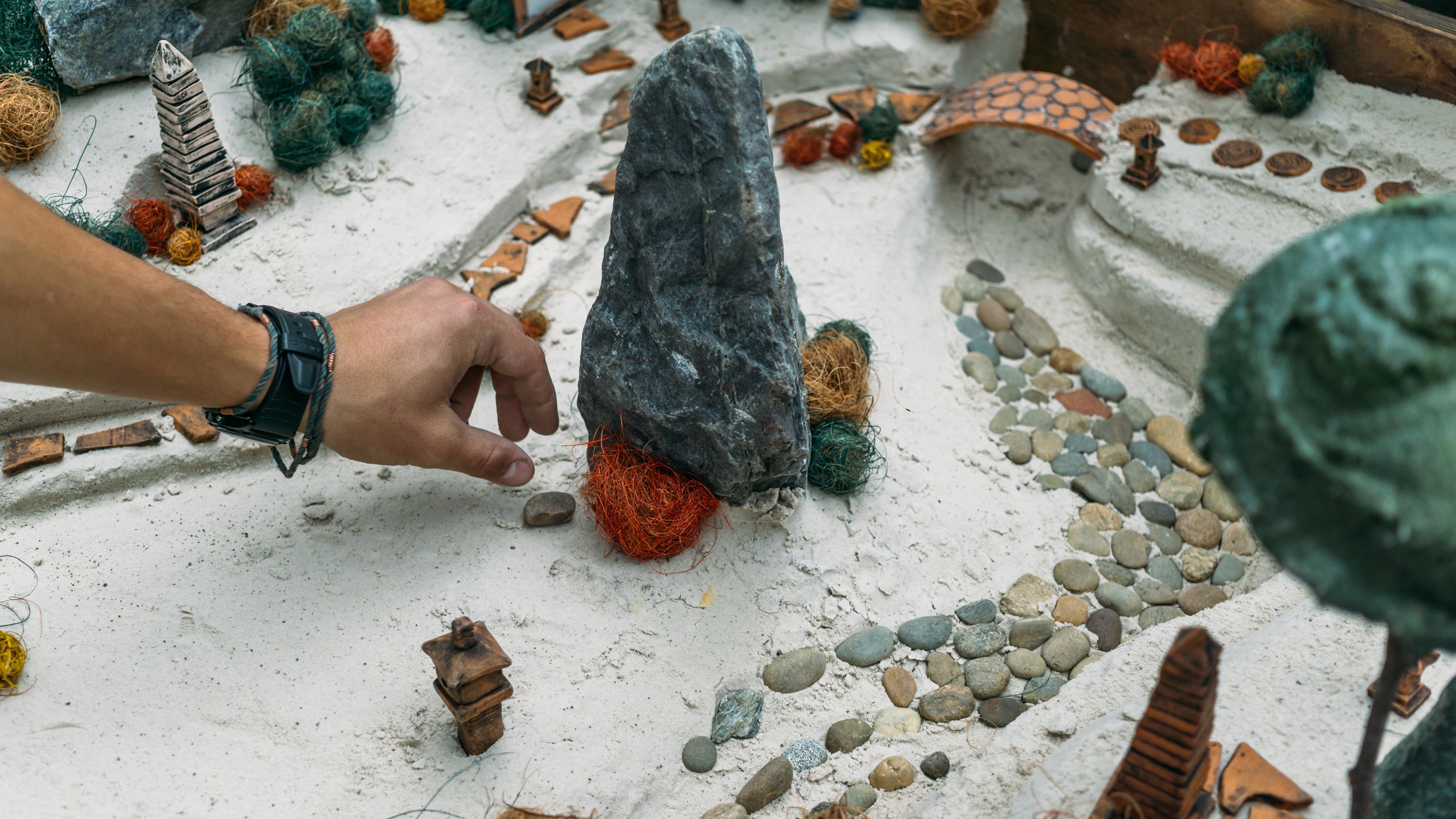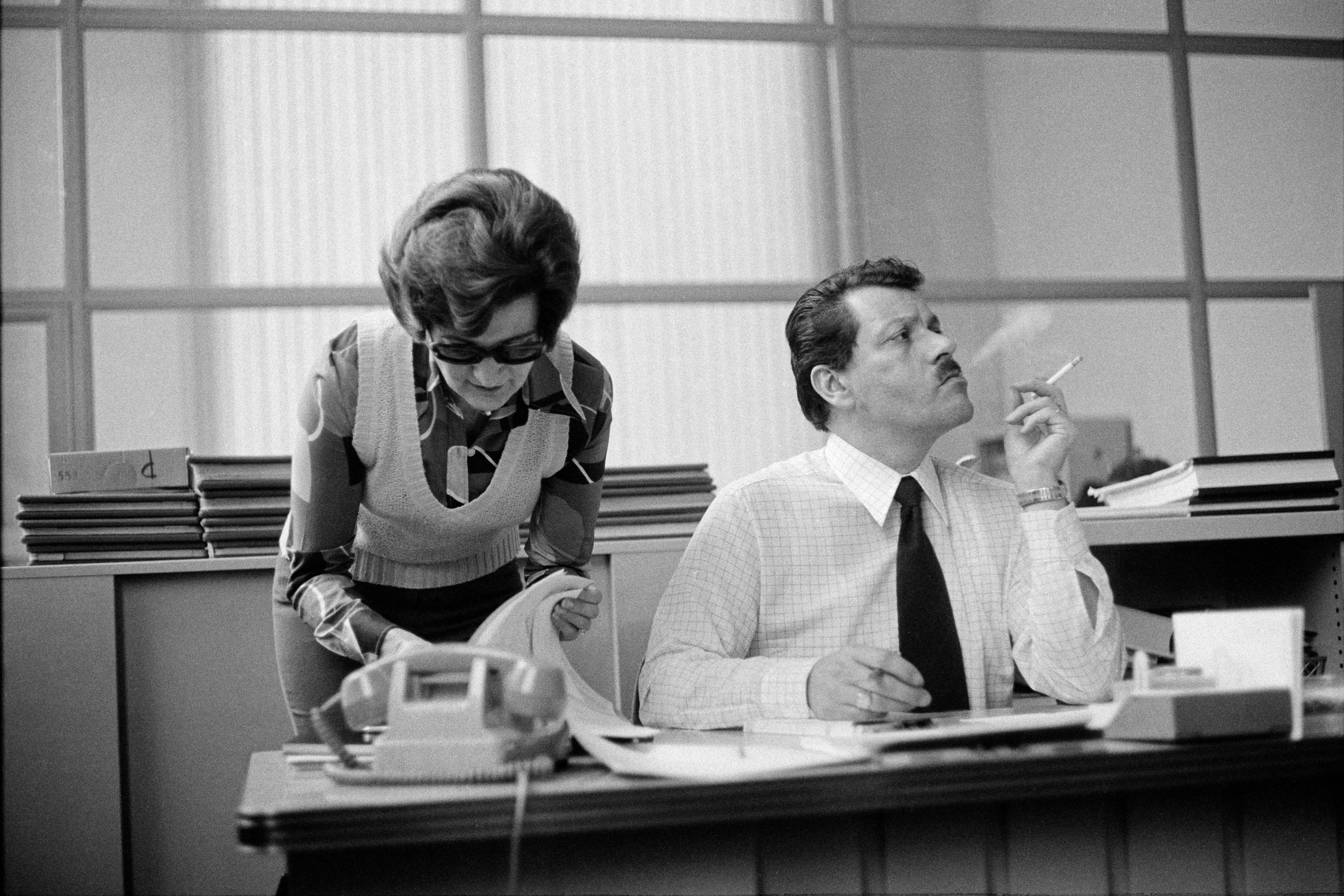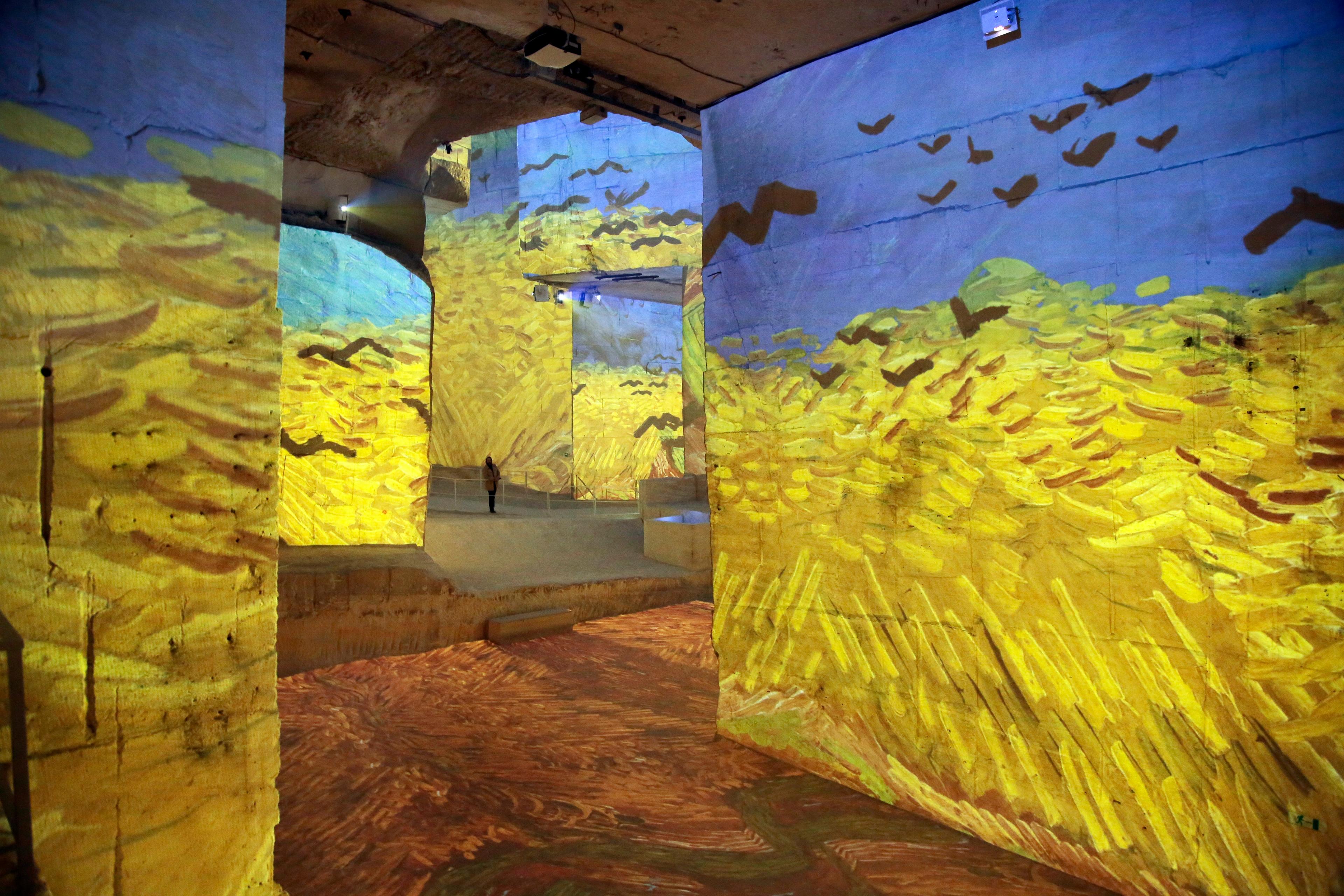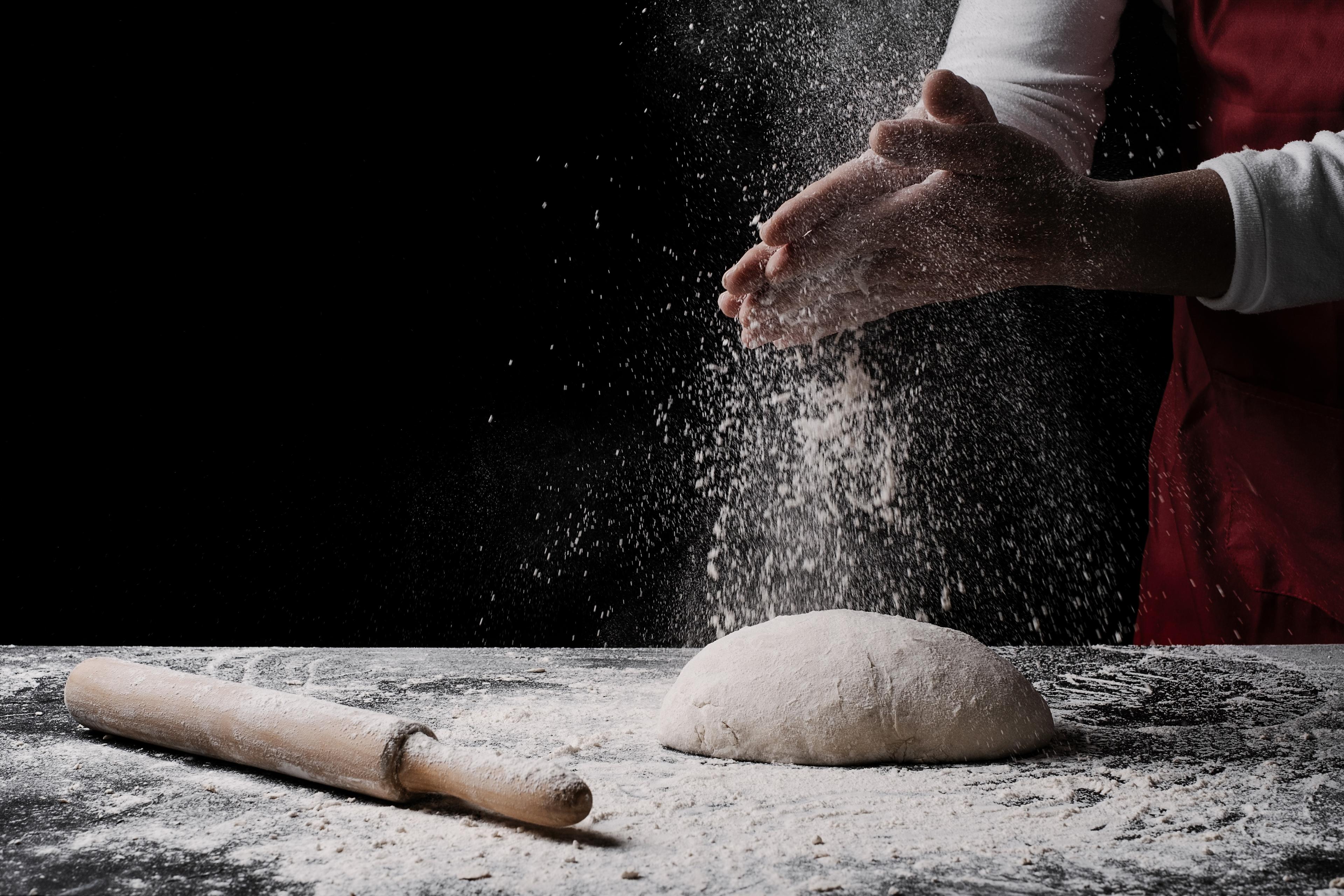Adjectives such as evocative, sensuous and tactile are often used to describe sand. This powerful medium used in sand-tray therapy, combined with symbolic objects, can provide a transformative experience for a client. The objects placed in the sand serve as physical metaphors symbolising the client’s intrapsychic experience (their inner world), their inter-relational experience, and sometimes their cultural, spiritual and religious experiences.
The sand tray itself acts as a natural container, with the therapist sitting alongside and helping the client engage with the process; it is as if they can take one step out of their pain without losing connection to thought and feeling. It helps the client explore an issue without becoming overwhelmed. In this sense, they become the ‘observer-experiencer’.
The emergence of sand-tray therapy is often associated with the British paediatrician and child therapist Margaret Lowenfeld in the early 20th century. She is acknowledged as the first therapist to adopt a sand tray in her work with children. In 1937, she presented what she called her ‘world technique’ at a conference in Paris, suggesting it could help children in therapy if they were struggling to put their experiences into words. Today, sand-tray therapy is used not only with children but with adults too. My own experience as a psychotherapist is that sand-tray therapy can be a powerful and effective way of working with a wide range of adult clients.
Much of the formal literature on sand-tray therapy with adults is dominated by Jungian ‘sandplay’, which excludes therapists who are not Jungian-trained. My own therapeutic approach is pluralistic – which is based on humanistic principles but draws on methods and skills from different therapeutic approaches, and I’m keen to raise awareness and access to sand-tray therapy for more people, including therapists and their clients.
The pluralistic therapeutic approach, founded by Mick Cooper and John McLeod, fits well with sand-tray therapy. It is a creative, flexible, collaborative approach that values assessment and feedback. In this context, the sand-tray can help guide both client and therapist in how they work together to meet the client’s goals and expectations for therapy.
For instance, a client may begin with a set goal in the initial appointment yet, once they engage with the sand tray, they might focus on something completely different. In my recent research into clients’ experiences of sand-tray therapy, Ruth (to protect their identity, I use pseudonyms for all the clients mentioned here) – in her late 40s and single – wanted to focus on her difficulty forming romantic relationships with men. In the first sand-tray therapy session, she selected a monster. What was going on for the client here? Next, she began talking about her physical and psychological abuse by her mother. The thoughts and feelings she had about her mother as a child were encapsulated in this object of a monster.
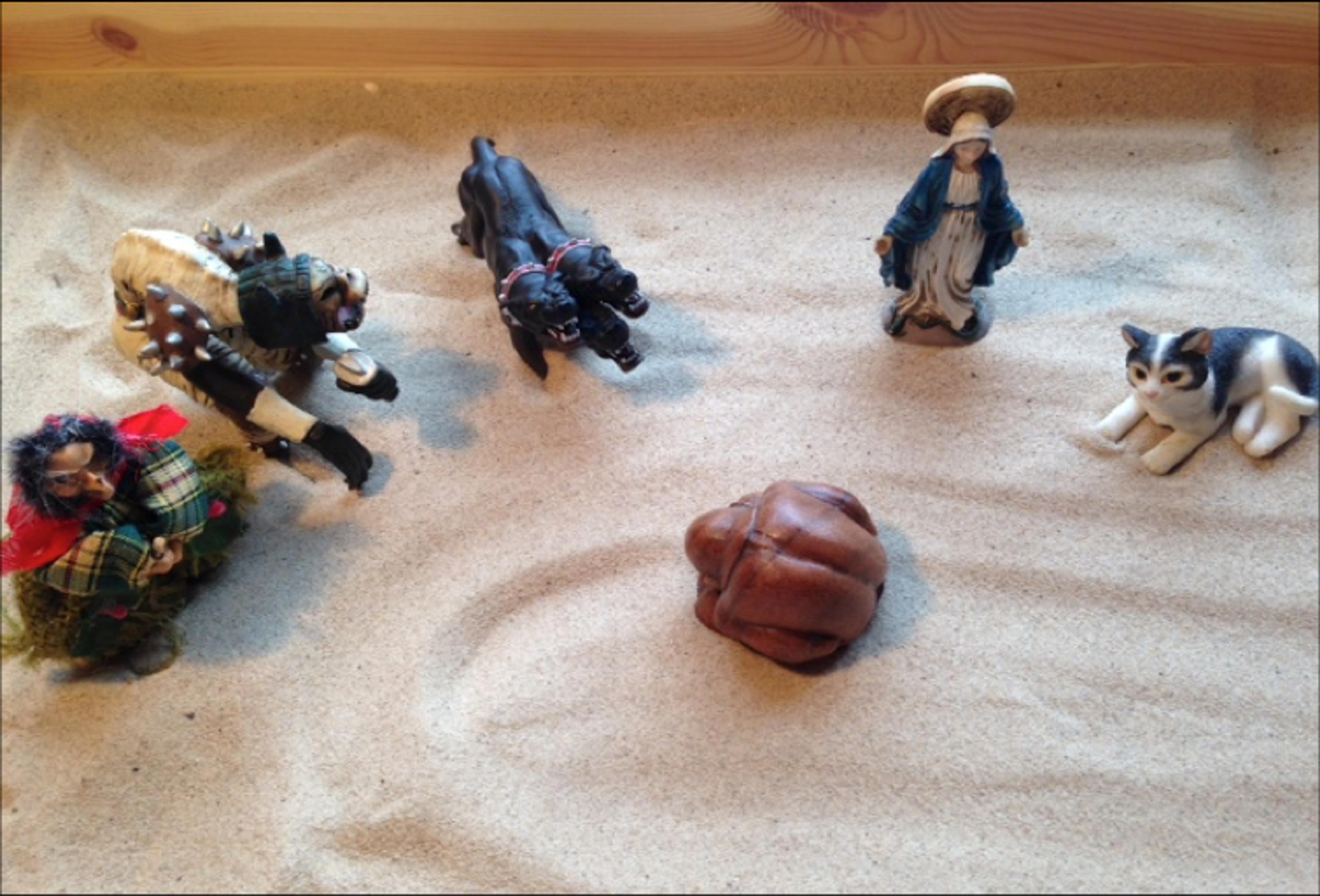
Photo supplied by the author
At the end of the session, Ruth explained that she’d had counselling for her childhood abuse before, but needed to revisit it in this session. Then, in the next session, Ruth felt she could move on and set the agenda by focusing on her relationship difficulties.
That’s an example of how the sand tray can be a therapeutic aid, but my approach sees it as more than that, as integral to the counselling process. The sand tray serves as a stage, with the client representing their experiences by selecting objects to symbolise their thoughts, emotions and physical sensations. The client creates a picture in the sand, not a static image, but a dynamic space where they can touch, move and bury the objects, giving voice to the experiences associated with their distress.
To give you more of an idea of how sand-tray therapy can help people work through their emotional difficulties, I will touch on four key concepts: phenomenological anchors, phenomenological hooks, phenomenological shifts, and object symbolism.
A phenomenological anchor refers to when a significant object acts as a point of reference that positions the beginning of a client’s exploration in the here and now. Sometimes, when a client is engaged in creative discovery, they can lose track of where they began. The object acting as a phenomenological anchor gives a physical reminder of that starting point, and any insight gained from the discovery can then be integrated more easily.
Take, for example, John – a single man in his 20s, who also took part in my research. He placed an owl in the sand, representing his fiancée, who had left him without any warning. He felt numb about being left alone; by using the owl as a phenomenological anchor, John could engage with feelings that were at the edge of his awareness, which he hadn’t been able to put into words. After six sessions, he felt he’d processed his powerful feelings of loss. Using the owl as a bridge of return between the present and the past helped John to understand the full impact of his loss, and afterwards he said he felt more able to invest in a new relationship.
A phenomenological hook refers to an object that aids unconscious processing, helping unconscious material to emerge into the client’s awareness. Jackie was in her 40s and living with her partner; during one session, she took a shark and positioned it between two objects representing different parts of herself: her private inner-me and her public outer-me. She told me she didn’t know why she had used this shark. I asked her how she would describe a shark to someone who had never seen or heard of one before. Jackie said it was mean, vicious, scary, and it attacks. With my help, Jackie connected this fear to her relationship with her partner: her fear that he might leave her, and she would be single and alone, which she began to explore in more depth.
A phenomenological shift represents a profound change in the client’s inner-world perceptions of the issues troubling them, including their thoughts, feelings and beliefs. For example, Shirley, a woman in her 20s, represented her anxiety and panic in the first session by placing a small ornamental wooden box into the sand and closing the lid, describing how she was in fear all the time, and feeling she was boxed-in and could not breathe.
After exploring this fear over the five sessions using the sand tray and objects, with several issues covered and adopting a breathing strategy, Shirley’s level of distress decreased. In the final sessions, she used the box again but opened the lid describing how she was managing her anxiety and looking forward to the future, no longer feeling trapped by her fear. Shirley had experienced a phenomenological shift, and now viewed her future in a more positive way.
Although objects usually have different symbolism for different clients, I have noticed in my work how some objects can carry similar meanings for many. One of those objects is a small ornamental cage with the client placing a small bird inside. Clients will typically describe the object in terms of feeling trapped, stuck or blocked in their life in some way.
However, it is also common to hear these clients say they feel safe in the cage. Once I’ve worked with them to explore their feelings of safeness, I have found a helpful intervention is to say: ‘So you say it feels safe inside, but I wonder how this would feel if you remained in there for weeks, months or even years?’ This question can help the client explore their edge-of-awareness experience – when they have a sense of something but can’t put it into words. They begin to explore beyond their feelings of safeness, with the bird in the cage acting as a phenomenological anchor. For example, clients often explore their fear of failing if they step out of the cage and attempt to fly by trying new experiences. Furthermore, the therapist could suggest the client try opening the cage door, peeking outside or leaving the cage to explore how that feels.
The cage object seems to hold powerful symbolism for many clients and, when exploring this in sand-tray therapy, it can bring a phenomenological shift as they gather confidence to explore new possibilities; even if they perceive themselves as failing, at least they tried, and they will often come to the conclusion that they can try again or try something different. This new attitude is integrated into their awareness as they reflect on how, before, they were afraid to step out of their comfort zone, but now they feel more confident to try new things.
Sand-tray therapy has many advantages over conventional therapy, including touch and spatial awareness that can aid the therapeutic process. Touch can involve the client manipulating the sand, such as smoothing or building hills, touching the objects and moving or removing them. This tactile element can aid expression, as there is an immediate connection between body, thought and feelings.
The client’s spatial arrangement of the objects can also be significant. For example, an object in the centre may represent a pressing issue that the client needs to focus on in the here and now. At other times, objects placed in corners may indicate a reluctance to explore an issue, such as a defence if the experience is too scary to explore at that time or something that the client wants out of their lives. Touch and spatial arrangement give opportunity for the therapist to reflect or make a suggestion at an appropriate time, providing another window to explore the client’s process.
I hope I’ve given a sense of how sand-tray therapy works, and how it is different from and can complement other approaches. If you are interested in finding a therapist who offers sand-tray therapy, make an initial enquiry to ask if they work creatively, especially if they use a sand-tray. And if you are a therapist or counsellor interested to learn more about incorporating sand-tray therapy in your work, my book Pluralistic Sand-tray Therapy: Humanistic Principles for Working Creatively with Adult Clients (2022) includes more detailed guidance.
